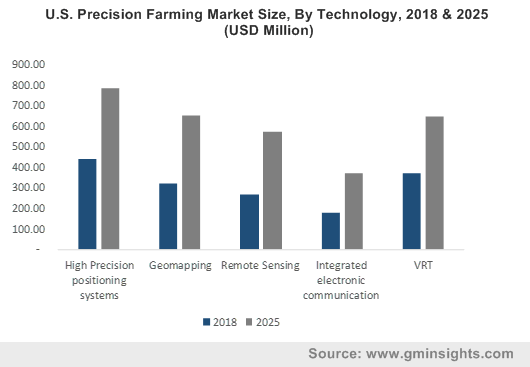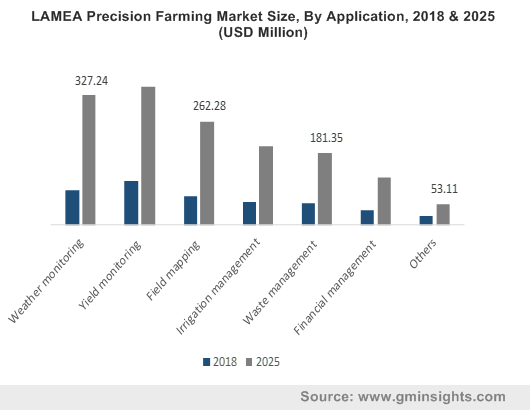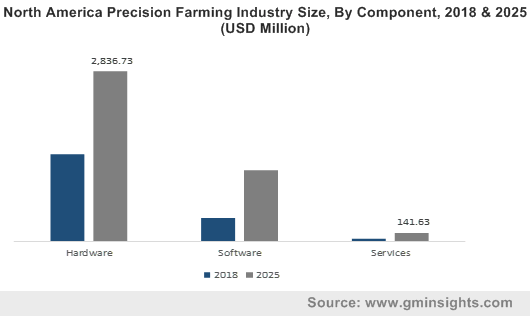Home > Agriculture > Agri Machinery & Tech > Agri Equipment > Precision Farming Market
Precision Farming Market Analysis
- Report ID: GMI227
- Published Date: Apr 2019
- Report Format: PDF
Precision Farming Market Analysis
In the precision farming component market, the hardware segment is expected to dominate the market in 2025 with a share of above 70% due to the huge installation of devices including sensors, smartphones, cameras, and UAVs. These devices can be installed on various types of farming equipment such as tractors and harvesters. The penetration of the precision farming technology will compel vendors to introduce new hardware devices with better location & data processing capabilities.
In this segment, sensors will dominate the precision agriculture market in 2025 with a share of over 18%. Farmers and researchers are deploying sensors, which will help them in better monitoring their crop health. The players operating in the market are introducing advanced sensor-based products, which can provide quantitative metrics about the crop health. For instance, in March 2017, SLANTRANGE Inc. introduced a new 3p multispectral sensor system for agricultural drones, which provides quantitative metrics about the crop’s health and enables growers to effectively scale their operations.

The high-precision positioning systems held a dominant share of over 27% of the precision farming market in 2018 due to the extensive use of GPS and GNSS systems. These technologies are widely used to determine & process location-based data. Moreover, precision farming technologies employ GPS to enhance the efficiency of processes and reduce the unnecessary expenditure on agrochemicals, fuel, and seeds. In addition to the spatial data provided by GPS, the technology along with the farm management software can be utilized for inter-vehicle communication and automated record keeping.
The yield monitoring application segment held a major portion of over 24% of the market in 2018. The yield mapping systems make use of different types of sensors, such as grain moisture sensors, grain flow sensors, and header position sensors along with GPS antennas & receivers, to collect relevant crop-related data for optimal planning and crop management.

The field mapping precision agriculture market is projected to grow at a CAGR of over 16% during the forecast timeline due to the increase in the use of GPS & GIS systems, which will help to gather real-time data and enable the analysis of a huge geospatial data set. These systems facilitate field mapping, soil sampling, and farm planning and help farmers to adopt effective soil or plant treatment strategies, increasing farm production.
The North America precision farming market is expected to hold a market share of over 32% by 2025 owing to mechanization and heavy dependence on technology for aiding agribusinesses. The factors that are backing the market growth in the region are estimated to be the increasing awareness about the quality of crops and the introduction of new initiatives to bring innovations to the sector. The federal government also passed the Precision Agriculture Connectivity Act in 2018 to meet the connectivity needs of the precision farming in the U.S. The regulatory body established a task force, which investigates and provides policy recommendations on how to improve the broadband internet access in croplands.

